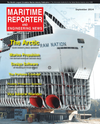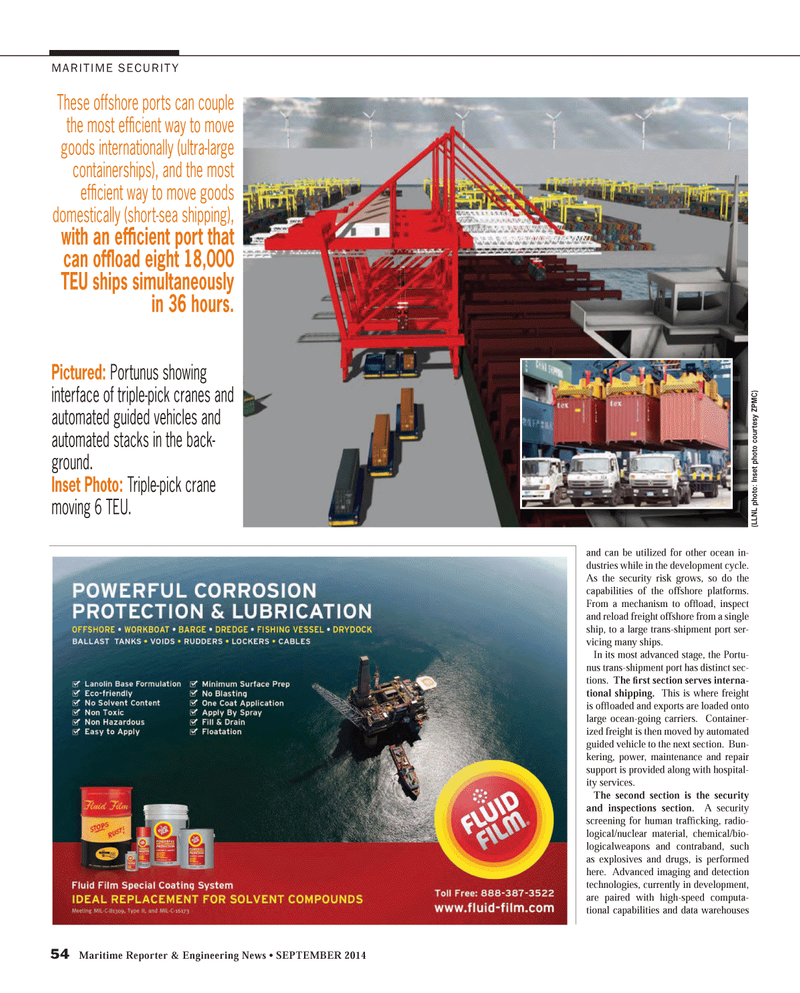
Page 54: of Maritime Reporter Magazine (September 2014)
Marine Propulsion Edition
Read this page in Pdf, Flash or Html5 edition of September 2014 Maritime Reporter Magazine
54 Maritime Reporter & Engineering News • SEPTEMBER 2014
MARITIME SECURITY and can be utilized for other ocean in- dustries while in the development cycle.
As the security risk grows, so do the capabilities of the offshore platforms.
From a mechanism to offl oad, inspect and reload freight offshore from a single ship, to a large trans-shipment port ser- vicing many ships.
In its most advanced stage, the Portu- nus trans-shipment port has distinct sec- tions. The fi rst section serves interna- tional shipping. This is where freight is offl oaded and exports are loaded onto large ocean-going carriers. Container- ized freight is then moved by automated guided vehicle to the next section. Bun- kering, power, maintenance and repair support is provided along with hospital- ity services.
The second section is the security and inspections section. A security screening for human traffi cking, radio- logical/nuclear material, chemical/bio- logicalweapons and contraband, such as explosives and drugs, is performed here. Advanced imaging and detection technologies, currently in development, are paired with high-speed computa- tional capabilities and data warehouses (LLNL photo : Inset photo cour tesy ZPMC)
These offshore ports can couple the most effi cient way to move goods internationally (ultra-large containerships), and the most effi cient way to move goods domestically (short-sea shipping), with an effi cient port that can offl oad eight 18,000
TEU ships simultaneously in 36 hours.
Pictured: Portunus showing interface of triple-pick cranes and automated guided vehicles and automated stacks in the back- ground.
Inset Photo: Triple-pick crane moving 6 TEU.
MR #9 (50-57).indd 54 9/3/2014 10:52:31 AM

 53
53

 55
55
